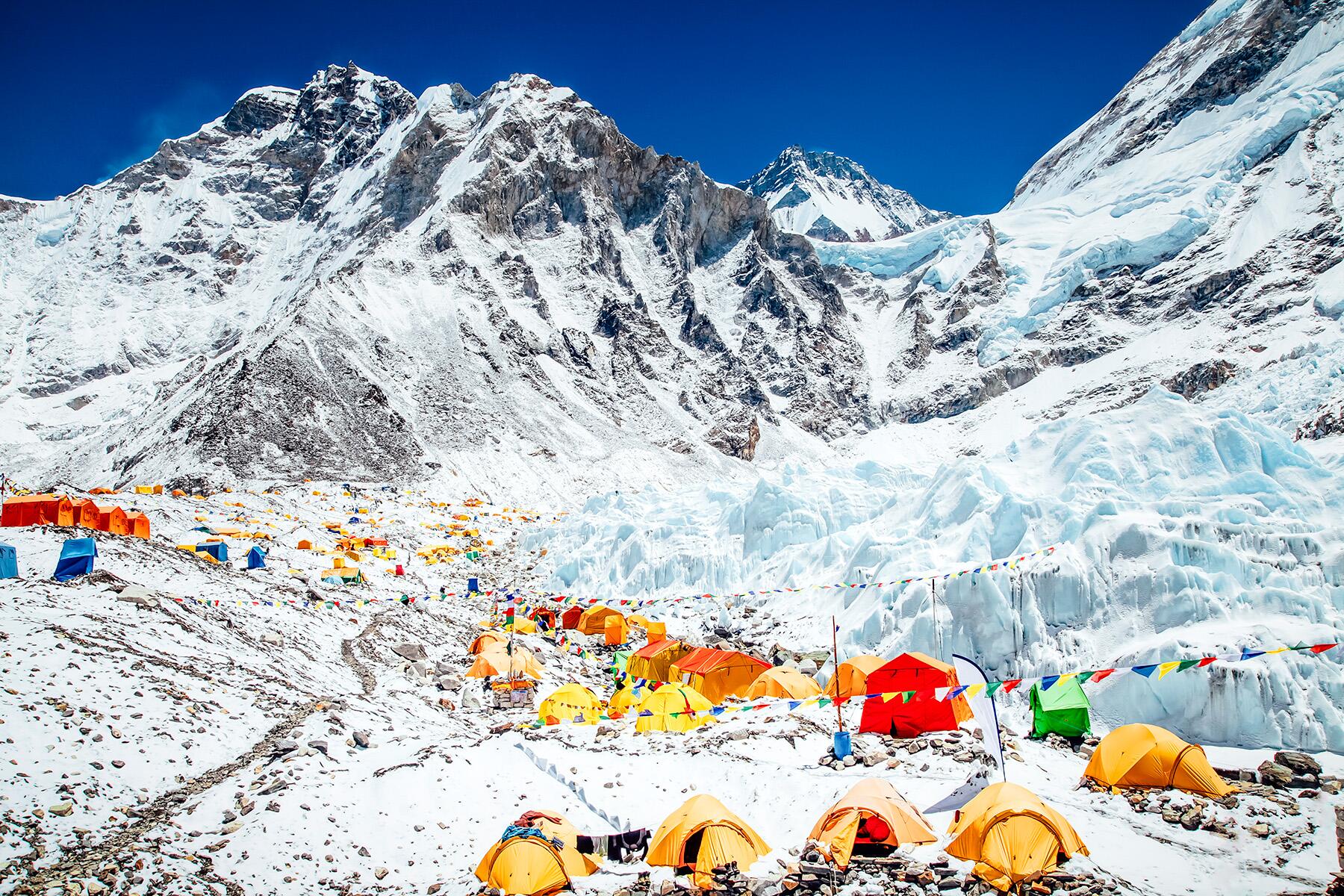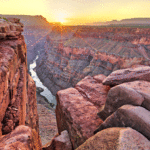- ⁄
- Travel News
- ⁄
- Outdoors
These potentially life-threatening walks reward hikers with stellar views.
If you’re not careful, a challenging hike can knock you on your backside—or worse.
It only takes a few minutes to get off track and get lost along some dodgy path, or deliberately wander across a narrow trail high above the earth. For those who enjoy a thrill now and again during their time outdoors, we offer you a sampling of some potentially life-threatening—or at the very least, hair-raising—treks and walks sprinkled around the globe.
Top Picks for You
Caminito del Rey
WHERE: Spain
Located in Spain’s Malaga Mountains, this narrow cliffside walking route (once used by power station workers) sticks to the side of El Chorro gorge. In the past, Caminito del Rey was known as the “world’s most dangerous pathway,” as several people have fallen to their deaths here over the years. The local authorities have recently reconstructed the path and improved safety standards by a huge margin—although it’s still a long plummet down.
Hua Shan Trail
WHERE: China
This trail in Shaanxi province is an unprotected, slender pathway with an intimidating drop below. And while brave hikers clip into safety wires with a harness on Hua Shan, this exposed, rickety “Plank Road in the Sky” is definitely not for the faint of heart. If you’re an unabashed daredevil, a night hiking option (with flashlights) is also available, you know, just in case you need an extra challenge on top of trying not to fall to your death.
Recommended Fodor’s Video
The Maze
WHERE: Utah
While The Maze, in Utah’s Canyonlands National Park, won’t scare you silly with massive vertical drops (although there are some decent-sized ones), this labyrinthine, hard-to-reach area offers plenty to see and do, plus a heck of a lot to watch out for. While a one-day trip is possible, due to its remoteness, most people spend a few days backcountry camping inside the park. Navigating canyons, tackling tough trails, getting lost, running out of water, not running into a lot of other trekkers to help you out if you get into a jam (hopefully not as severe as the one depicted in the film 127 Hours), rockslides, and tons of other obstacles can make The Maze a nightmare—or an absolute blast—depending on how well you prepare.
Devil's Path
WHERE: New York
New York State’s Devil’s Path, located in the Catskill Mountains, is considered by many to be the most demanding hike on the East Coast. The real draw here is getting the trek wrapped up in a single day, and living to tell the tale. The Devil’s Path—named by Dutch settlers who thought only a hooved demon could scramble across these rocky, serrated summits—claims well over 4,000 feet of hard-fought elevation gain, half a dozen major peaks, and lots of perilous traverses. When exhaustion sets in, you might end up bargaining with the almighty to lend you a guiding hand along the way. And if things really get bad, maybe you’ll run into the devil himself…if those early Dutch settlers can be believed.
Glencoe Aonach Eagach Ridge
WHERE: Scotland
Want to climb above the low-lying clouds habitually blanketing the narrow valleys of Scotland? Glencoe Aonach Eagach Ridge, on a good day, should give you a view to die for. Celebrated as one of the most daunting ridge walks in Britain, Aonach Eagach Ridge, with its exposed scrambles and chimney ascents and descents high above Loch Leven, is only recommended for the most experienced of hikers. With eagle-eye views over the Highlands valley of Glen Coe, the ridge runs between Meall Dearg and Sgorr Nam Fiannaidh (yes, both are fairly hard to pronounce), which are Munros, or Scottish mountains over 3,000 feet. Come for the hard scrambles and amazing panoramas this impressive ridge hike offers those who conquer its lofty summits.
Maroon Bells South Ridge
WHERE: Colorado
For intrepid ramblers who like to bag peaks, especially 14,000-foot peaks (fourteeners) or higher, Maroon Bells South Ridge is a brutal, although popular hiking route. This iconic Colorado hike, located just west of Aspen, is a seductive alpine siren, occasionally luring trekkers to bodily injury, or even death. Located in the Elk Mountains range, the Maroon Bells Traverse, strung between the Maroon Bells twin summits, is a rock-strewn climb with lots of lethal exposure. But for skilled hikers willing to take the risk to life and limb, this vertical trail offers picturesque views over Maroon Lake, the surrounding peaks, and the forested mountain valleys below, making the climb worth the effort.
Yosemite Mist Trail
WHERE: California
Yosemite National Park’s Yosemite Mist Trail is one of the most popular hikes in the park, but it’s definitely not for the weak-kneed, or anyone out of shape. Once you start from the trailhead, it’s pretty much an uphill battle for the next three miles to Verna Nevada Falls (add a few more miles if continuing along to Nevada Falls) over the steep trail, stone steps, and slippery boulders. Mist stands out because of its vantage points over some of Yosemite’s most iconic waterfalls, as well as its incredible panoramas across the entire park. If you do go, be prepared for a damp, strenuous climb that can last anywhere from two to four hours or more, depending on what option you take, and if you link up with the historic John Muir Trail on your return.
Grand Staircase-Escalante National Monument
WHERE: Utah
While the future of Utah’s Grand Staircase-Escalante National Monument is a little uncertain these days (many invested parties, private and political, would like to reduce its nearly two-million-acre size), there’s no denying what an astounding collection of slot canyons, sheer drop-offs, jagged cliffs, arches, gulches, and enjoyable hikes this enormous park has to offer. Surefooted outdoor enthusiasts trekking through these altering landscapes can meander through narrow canyons, across rocky terraces, and past (or near) towering cliff faces. Beware of flash floods here, which can sweep hikers through narrow canyons to their death. Different expanses of Grand Staircase-Escalante often come with cool, and occasionally foreboding-sounding names like Spooky Gulch, Little Death Hollow, Coyote Gulch, Zebra Slot, and more.
Oku-Hotaka to Nishi-Hotaka Traverse
WHERE: Japan
Many hikers who’ve roamed across Japan rate the Oku-Hotaka to Nishi-Hotaka Traverse, on the main island of Honshu, as one of the nation’s most dangerous traverses. Oku-Hotaka, Japan’s third highest summit, serves up scrambles and knife ridges, plus plenty of exquisite views across Japan’s Northern Alps. While the hazardous traverse, which comes with lots of potential for a hard fall, can be accomplished in a single day, many trekkers spend more time crossing through these mountains in order to take in all of the exquisite alpine nature on display.
Table Mountain National Park
WHERE: South Africa
Table Mountain National Park sees a lot of annual foot traffic. Over the decades, millions of sightseers have wandered up to the flat-topped summit (or have jumped on the cable car) to experience the mountain’s dizzying heights. Trekkers can explore the Devil’s Peak and Lion’s Head crests, both of which loom over the elevated plateau, as well as wander past high cliffs while enjoying stunning vistas of Cape Town’s amphitheater-esque City Bowl, and the wild South Atlantic beyond. If you do go, enjoy yourself, of course, but also proceed with caution, as South African National Parks warns “…more people die on Table Mountain than Mount Everest” most years due to falls, and sadly, the occasional murder.
West Coast Trail
WHERE: Canada
From the beginning of May to the end of September, Canada’s West Coast Trail opens for business. This 47-mile trail winding its way through some of Vancouver Island’s most pristine natural settings isn’t for novice trekkers. Cliffs and steep inclines ending in beaches (if you’re lucky), or else sharp rocks pounded by turbulent Pacific waves, abound. Hikers will encounter lots of ladders to help them ascend abrupt forest paths and slick boulders during their very own real-life game of Chutes and Ladders. With beach walks, elevation gains, tons of wildlife, dense forests, and damp weather conditions, this trail—initially carved out of the land to help rescuers reach shipwreck victims in “The Graveyard of the Pacific”—provides a bounty of topographical challenges to keep hikers breaking into a sweat all day long.
Bright Angel Trail
WHERE: Arizona
If visiting Grand Canyon National Park’s South Rim, and then dropping into the canyon proper, you’ll likely be taking the switchback-laden Bright Angel Trail. And while this is a ridiculously popular, well-worn route, a trail this steep comes with some perils. It’s called the Grand Canyon for a reason, as it’s a long trip down. Heat stroke and sun exposure, dehydration, general exhaustion, dodgy encounters with trail mules, and of course stumbles and broken or scraped up limbs number among the many reasons why the Grand Canyon’s Emergency Medical Services (EMS) and Search and Rescue (SAR) teams are some of the most active in the country.







